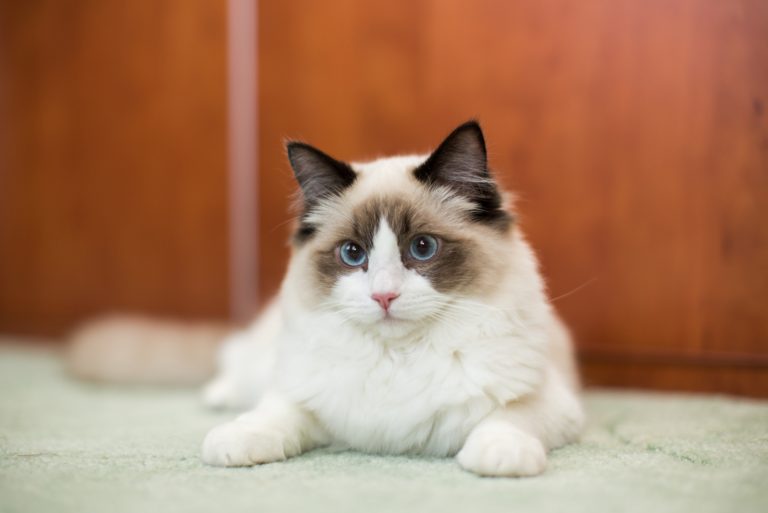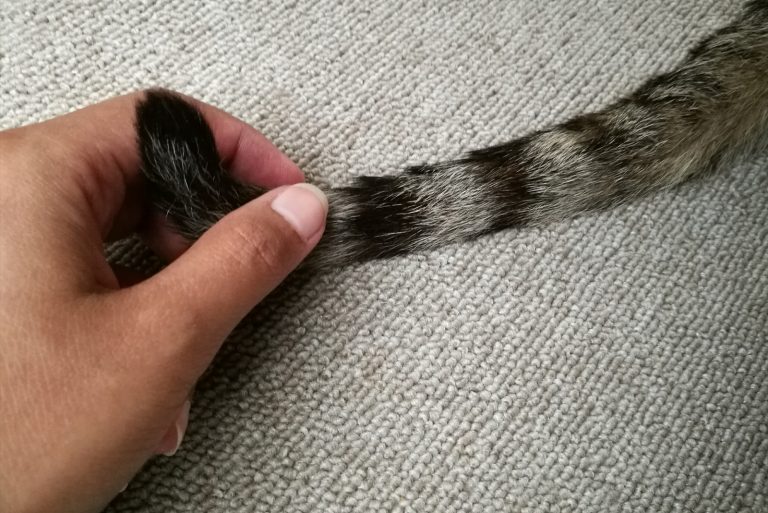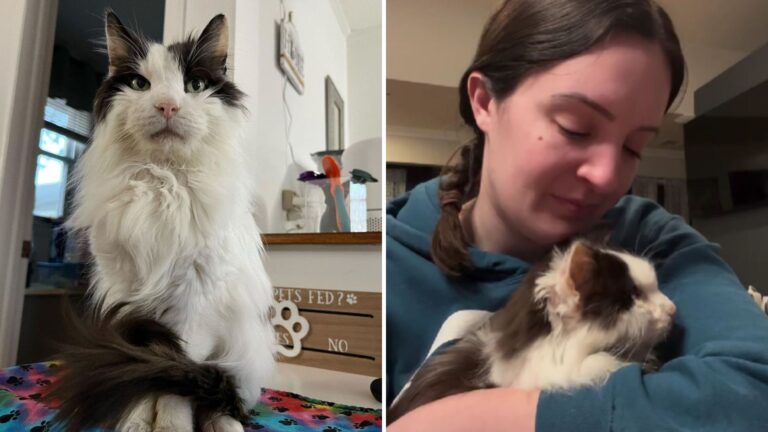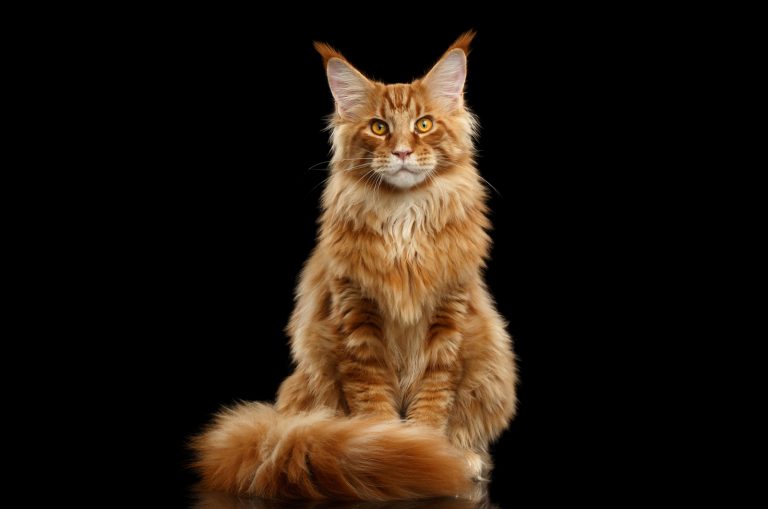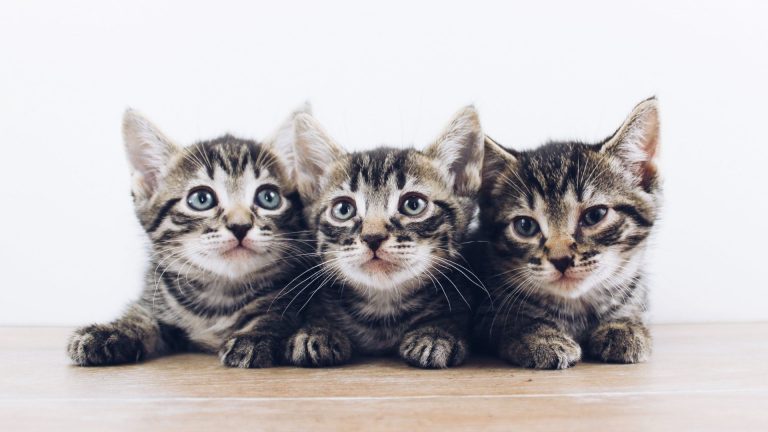Facts About The Stunning Lilac Tortoiseshell Cats
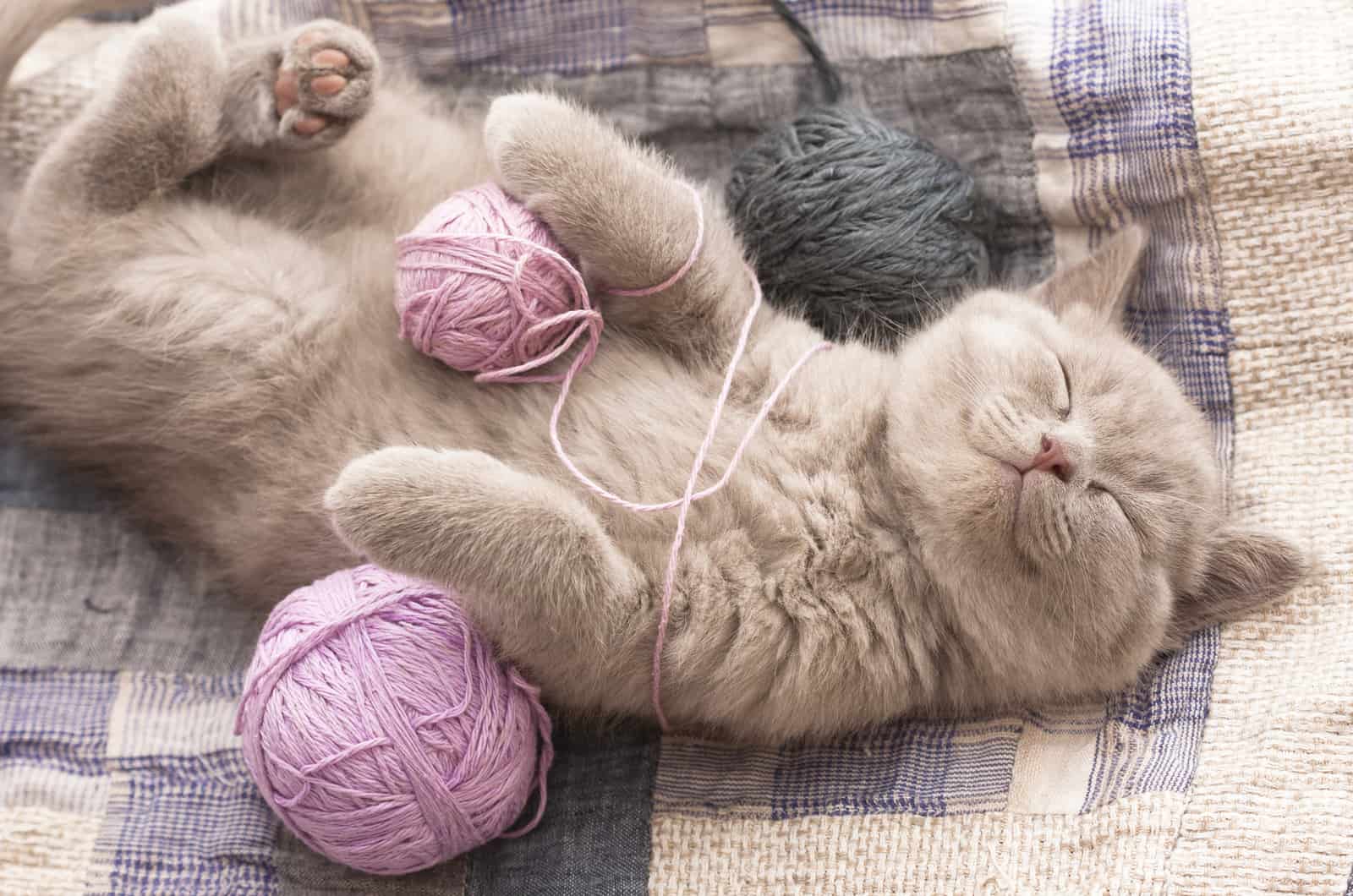
Have you ever seen a lilac tortoiseshell cat in person? If you did, or if you’re an owner of one of these beauties – you’re lucky.
Lilac Tortoiseshell cats are famous for their tortoiseshell pattern of two colors – blue (or gray as some people call it) and cream.
Their pattern and color combination is very rare and interesting, making them very sought–after by cat lovers.
Continue reading to find out some interesting facts about lilac torties, some misconceptions people might have about them, as well as the genetics of their beautiful appearance!
What Is A Lilac Tortoiseshell Cat?
Lilac tortoiseshell cats are those of any breed that have this mesmerizing tortoiseshell pattern with beautiful gray and lilac dilute colors (Is it very obvious I‘m the no1 fan of these cats?!).
The pattern is interesting, but the dilute colors really make these cat’s coats unique.
Nevertheless, they are extremely rare and they’re almost exclusively all female. If you’re interested in why that is – continue reading!
7 Facts About Lilac Tortoiseshell Cats
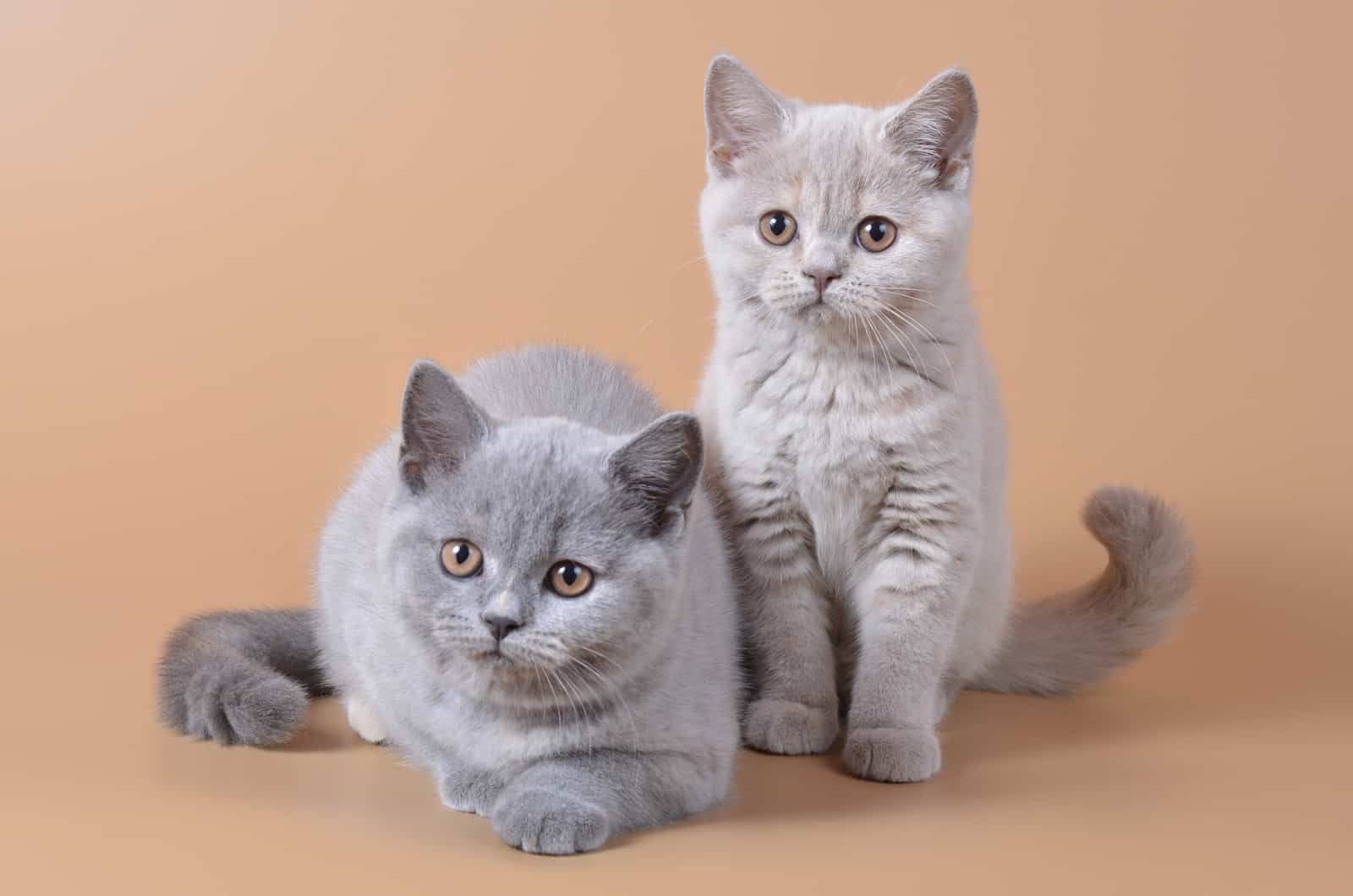
1. Lilac Tortoiseshell Is Not A Cat Breed
A clear distinction has to be made between a cat breed versus a cat’s physical appearance. Lilac tortoiseshell is NOT a specific breed!
Lilac tortoiseshell only describes the color and the pattern of a cat’s coat – and nothing more.
Just like a black smoke or orange tabby cat are not a cat breed, but rather a description of the cat’s outer appearance.
In fact, many different breeds can have lilac tortoiseshell members, as listed below.
2. These Cat Breeds Can Have Lilac Tortie Members
Many different cat breeds can have members that are lilac torties. The tortoiseshell pattern is not so rare, but the combination with the lilac color is rare.
Below are some breeds that are known to be lilac torties, among other coat colors and patterns:
🐾 Maine Coon (long-haired)
🐾 Persian (long-haired)
🐾 Ragdoll (semi-longhaired)
🐾 Bengal (short-haired)
🐾 Cornish rex (short-haired)
🐾 Japanese bobtail (can be both short and long-haired)
As you can see, this coat color and pattern appear in both long-haired and short-haired cat breeds.
Of course, lilac torties are more easily observed in long-haired cat breeds, as the longer hair allows more color and pattern to be observed.
3. Lilac Tortoiseshell Bears No Personality Traits
It is known that a cat’s personality is, apart from environmental factors, largely dependent on the cat breed.
For example, it is known that Ragdolls are a bit lazy, Abyssinians are extremely energetic, Norwegian forest cats love to climb everywhere, while Turkish Vans love swimming.
But you cannot say, for example, that all black tabbies are energetic or all red smoke cats are friendly. That is because personality traits do not depend on physical appearance!
But, when it comes to torties, their attitude is a famous topic. If you choose to believe it – it’s completely up to you!
Tortitude – Is It Real?
Tortitude is a name for the unique attitude tortoiseshell cats are said to have.
Even though there is no scientific proof to back this up, many owners, veterinary professionals, and shelter workers can confirm that this is true.
This cat attitude is characterized by:
🐾 strong will power
🐾 stubbornness
🐾 short–tempered
🐾 determination
🐾 independence
🐾 feistiness
🐾 loyalty
🐾 possessiveness
🐾 playfulness
🐾 being demanding
🐾 being very energetic
🐾 being very vocal
Whether you choose to believe it or not, it’s up to you. But I definitely find it a very interesting topic!
4. Lilac Tortie Cats Are EXTREMELY Rare
How many times have you ever seen a tortoiseshell cat with standard black and red markings? And then stop and think, have you EVER seen a lilac tortie?
Personally, I haven’t seen many torties during my life. They are relatively rare in most cat species, and I have never seen a lilac tortie.
Most torties have the “usual” black and red coat colors, so I guess it makes sense that I’ve never seen a lilac tortie. But they are so beautiful and unique that I would love to see one in person (or even own one!).
But it’s important to say that lilac torties of any cat breed are extremely rare. So if you’re on the look–out for a lilac tortie cat – that might take some time…
5. (Almost) All Lilac Tortie Cats Are Female
Let me give you a quick reminder: males have XY sex chromosomes, while females have XX sex chromosomes.
As you already know, a tortie’s coat is black and red (or the dilute versions of black and red).
The gene that gives rise to the black color is found on X chromosomes, but the gene that gives rise to the red color is found on the second X chromosomes.
In order to have both red and black coloration, a cat needs to have two X chromosomes – one X chromosome for red, and the other X chromosome for the black color.
As I briefly mentioned in the beginning of this section, only female cats have two X chromosomes, meaning most torties are female cats. But male torties exist too!
How Come Male Tortoiseshell Cats Exist?
Male torties have XXY chromosomal arrangement. The Y chromosomes indicates it’s a male, while one of the two X chromosomes is there “by mistake”
They have a syndrome known as Klinefelter syndrome. It is characterized by the XXY sex chromosomes present in all cells.
Because of the abnormal presence of the extra X chromosome, they are sterile in the majority of cases. They also have a set of different health issues, such as heart problems and tumors.
6. You Will Most Probably Never See A Lilac Tortie Male Cat
Only one in 3,000 torities is a male tortie, and their existence is all due to a rare genetic condition known as Klinefelter syndrome.
So why am I 99.9999% sure you’ll never see a lilac tortie male cat?
It is due to two reasons:
🐾 Male torties are extremely rare, only 0.3% of all torties are male cats
🐾 Lilac color in tortoiseshell cats is also very rare
So there you go – if you combine a very rare male cat with very rare dilute coloring, you have my claim that you will most likely never see a lilac tortie male cat in your life. But … never say never, right?
It just might be you’re the one to see it as early as tomorrow (but not really).
7. Torties Are Folklore Characters
In many different cultures, it is believed that tortoiseshell cats are a sign of good fortune.
In ancient Celtic folklore (Scotland and Ireland), owning a tortoiseshell cat is thought to bring the owner and the household good luck.
A long time ago in England, it was believed that rubbing a tortoiseshell cat’s tail on a wart would help to heal the skin infection.
In the USA, torties are sometimes referred to as money cats because it’s believed they bring good fortune.
Among Japanese sailors, torties onboard means protection from bad weather and ghosts at sea.
And the most interesting belief (and a personal favorite of mine) is the legend that a black cat walked on earth and carried the sun within its body, and, as the sun was leaving the cat’s body, it left behind a few golden rays.
The Genetics Of Lilac Tortoiseshell Cats (Bear With Me)

In order to make this very simple, let’s split the explanation into two parts: one about the pattern and the other about the color.
Where Does The Tortie Pattern Come From?
The genetics of the pattern of all tortoiseshell cats is not so simple to explain. But in the most simple terms, the reason behind dilute torties having two different colors is because all torties have “two types of cells”, so to speak.
In the first “type of cells”, the X chromosome from the mother is inactivated (is not functional). In the second “type of cells”, the X chromosome from the father is inactivated.
For example, let’s say the mother’s chromosome is responsible for color A and the father’s chromosome is responsible for color B.
In one cell, the father’s chromosome will not be functional, but the mother‘s will be – that means the cell will exhibit color A.
In another cell, the mother’s chromosome will not be functional, but the father’s will be – that means that cell will exhibit color B.
That’s the reason behind toties exhibiting two different colors.
Where Does The Lilac Color Come From?
I am sure you enjoy looking at these beautiful kitties, but have you ever wondered how come their colors even exist? After all, the usual tortie cat colors are black (or chocolate) and red.
Well, the answer lies in a gene called MLPH or melanophilin gene. Its role is to produce a protein that is involved in pigment production. In its usual form, the pigment produced is black (or chocolate) and red.
But, there is a chance for that gene to be recessive. What does that mean?
When the MLPH gene is recessive, the result is diluted pigmentation – black pigment is now blue/gray, chocolate pigment is now lilac, while red pigment is now cream color.
Recessive genes are the result of one recessive allele (gene variant) being inherited from the mother, while the second recessive allele is inherited from the father.
If the gene responsible for pigment production is in its recessive form – it will not work as it normally does (giving the black (or chocolate) and red pigment).
Misconceptions About Lilac Tortoiseshell Cat
I often see people give traits to cats with specific coat features, but this is a mistake.
Traits are shared within a specific species, and not based on physical appearance.
For example, all Siamese cats are very playful by nature, and there are tabby Siamese cats.
But can you say all tabby cats are playful as a shared trait?
No, because even though there are tabby Siamese cats which are very playful, there are tabby American Shorthairs that are not so playful (they’re a bit lazy).
I really hope this explanation was understandable, and now let’s move on to some common misunderstandings involving the issue I explained.
4 Myths You Should Be Aware Of
Misconceptions about (lilac) torties is that they:
🐾 have shared personality features (even though tortitude is a common theme in the cat world)
🐾 need special maintenance
🐾 have special health issues
🐾 need specific nutrition or diet
And to be clear, no – lilac torties or any other torties do not have any shared personality traits, they don’t need any special maintenance, have no particular health issues, nor do they need a special diet to remain healthy.
Understanding Lilac Torties: Coat Patterns And Colors 101
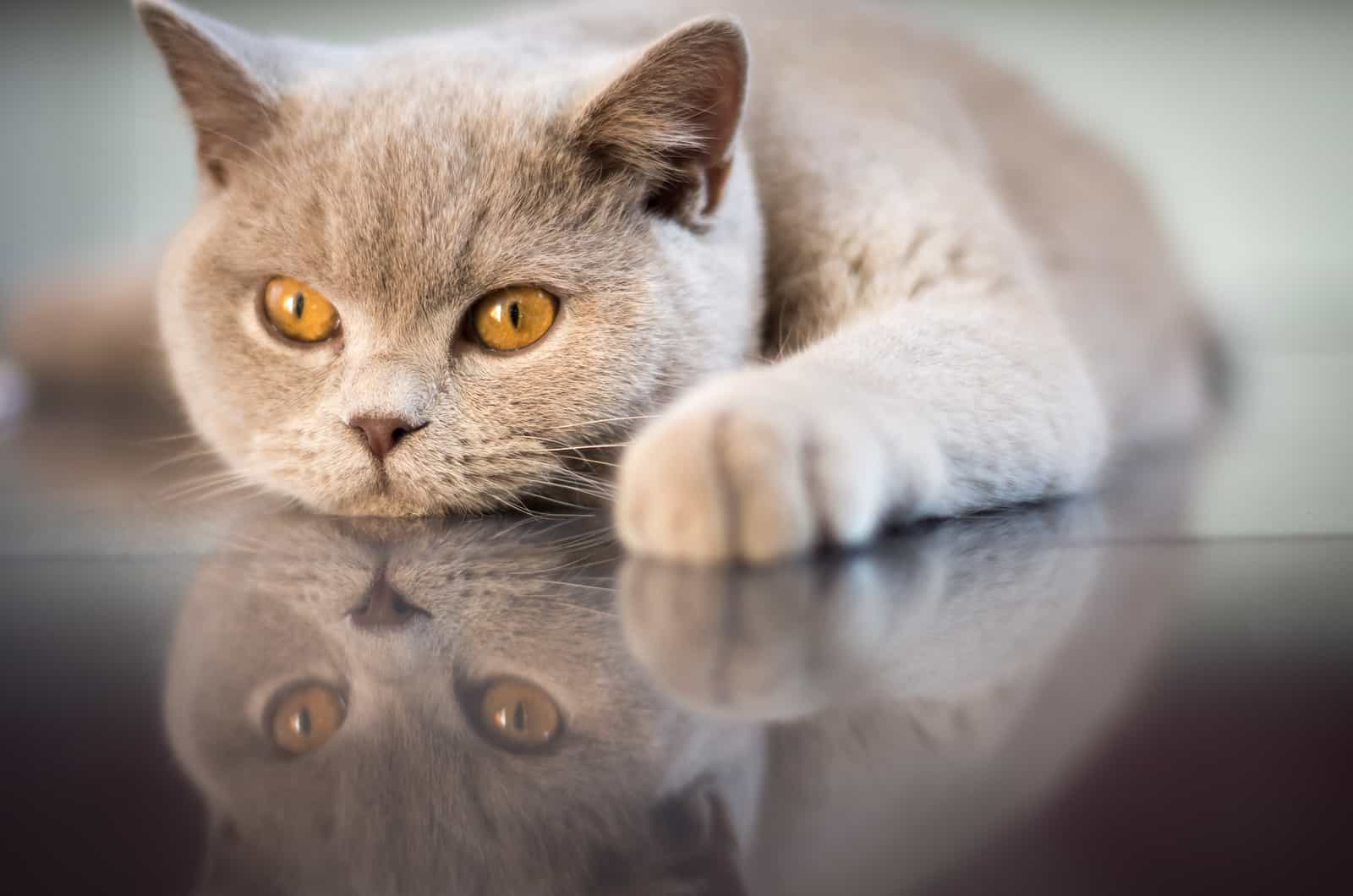
Breeds, coats, colors, patterns, tabby, blue, mackerel … it can get really confusing if you’re not “a pro”.
In order to fully grasp what lilac and tortoiseshell represent, as well as clear up any doubts you might be having, let’s go over the basics of cat coat patterns and colors!
Let’s Talk Patterns
Below are the six patterns you can observe in almost any cat.
1. Tabby – The Most Common One
This pattern is by far the most common cat coat pattern in domestic cats. A popular characteristic of a tabby pattern is the M–shaped mark on the cat’s forehead.
A Tabby coat pattern appears in four forms:
🐾 Mackerel/Striped – vertical stripes run down the sides of the body
🐾 Classic/Blotched – swirling pattern, marbled effect all over the body
🐾 Spotted – no stripes, just spots all over the body
🐾 Ticked – no distinct pattern, all hairs are agouti (when each hair has multiple pigment bands/different colors)
2. Solid – The Most Simple One
A cat has a solid coat pattern when its coat is only one color. Of course, this pattern is the simplest one and the easiest one to notice.
They are not very common because, in order for a cat to be considered as a solid, only one color has to be preset. If even a speck of another color is there – the cat cannot be considered as solid.
3. Bicolor
As you can conclude from the name of the pattern, this cat coat pattern is characterized by having only two colors. The main color is almost always white, while the second one can be any other color.
The most commonly observed bicolored cats are those with a white and black or white and blue/gray combination. The rarest bicolor combination is white and cream.
You might have heard about tuxedo cats (black and white cats). Those are black cats that have a big white patch covering their face, neck, and chest – making it seem as if the cat is wearing a tuxedo!
4. Tricolor/Calico
Tricolor or Calico pattern is famous for having only three distinct colors (or their variations). The three colors are:
🐾 Black/Blue
🐾 Red/Cream
🐾 White
As you can see, there are also dilute calico cats (the color combination doesn’t only have to be black and red).
People often use calico and tortoiseshell interchangeably, but the two are not the same. The difference comes in the amount of white – tortoiseshell cats have no white spotting/white markings, while calico cats do.
5. Tortoiseshell
This coat pattern is characterized by the presence of red–black color combinations. It doesn’t necessarily have to only be these two exact colors, but rather similar colors can be present.
For example, instead of red, there can be yellow, orange, or cream. And instead of black, there can be gray or brown.
There is also a term torbie, indicating a cat that has markings of both a tabby and a tortoiseshell pattern; they can also be called patched tabbies.
Both tortoiseshell and calico cats can be chimeras – they can have one side of the body of one color, while the opposite side of the body is of another color.
6. Colorpoint
Cats with this pattern are very interesting for any science–lover. Because of a genetic mutation, they have darker–colored fur at colder areas of their body (ears, paws, face) while the warmer areas of the body are white.
This is because the pigment production is extremely low in warm conditions.
Let’s Talk Colors
When it comes to the colors, there are nine basic colors you can observe in any given cats and those are:
🐾 White
🐾 Black
🐾 Brown/Chocolate
🐾 Cinnamon
🐾 Red
🐾 Blue/Gray
🐾 Lilac
🐾 Fawn
🐾 Cream
As you can see, there are, as I like to call them, “basic colors” such as white, black, brown, cinnamon, and red. On the other hand, there are also dilute colors and those are blue, lilac, fawn, and cream.
The dilute colors are the result of a cat having two recessive alleles for the Dense pigment gene. If a cat has the two recessive alleles, black fur color becomes blue, brown fur becomes fawn, and red fur becomes cream.
Below is a summary that will make this a bit easier to understand and remember.
[table id=32 /]
As you can see, lilac is a dilute color and one of the nine colors you can observe in almost any cat. Personally, I really like lilac and fawn colored cats, even though I’ve only seen a dozen of them in my life. They are very rare but extremely beautiful.
If you have a lilac or fawn colored cat as your own, I’ll admit – I’m jealous of you!
FAQ
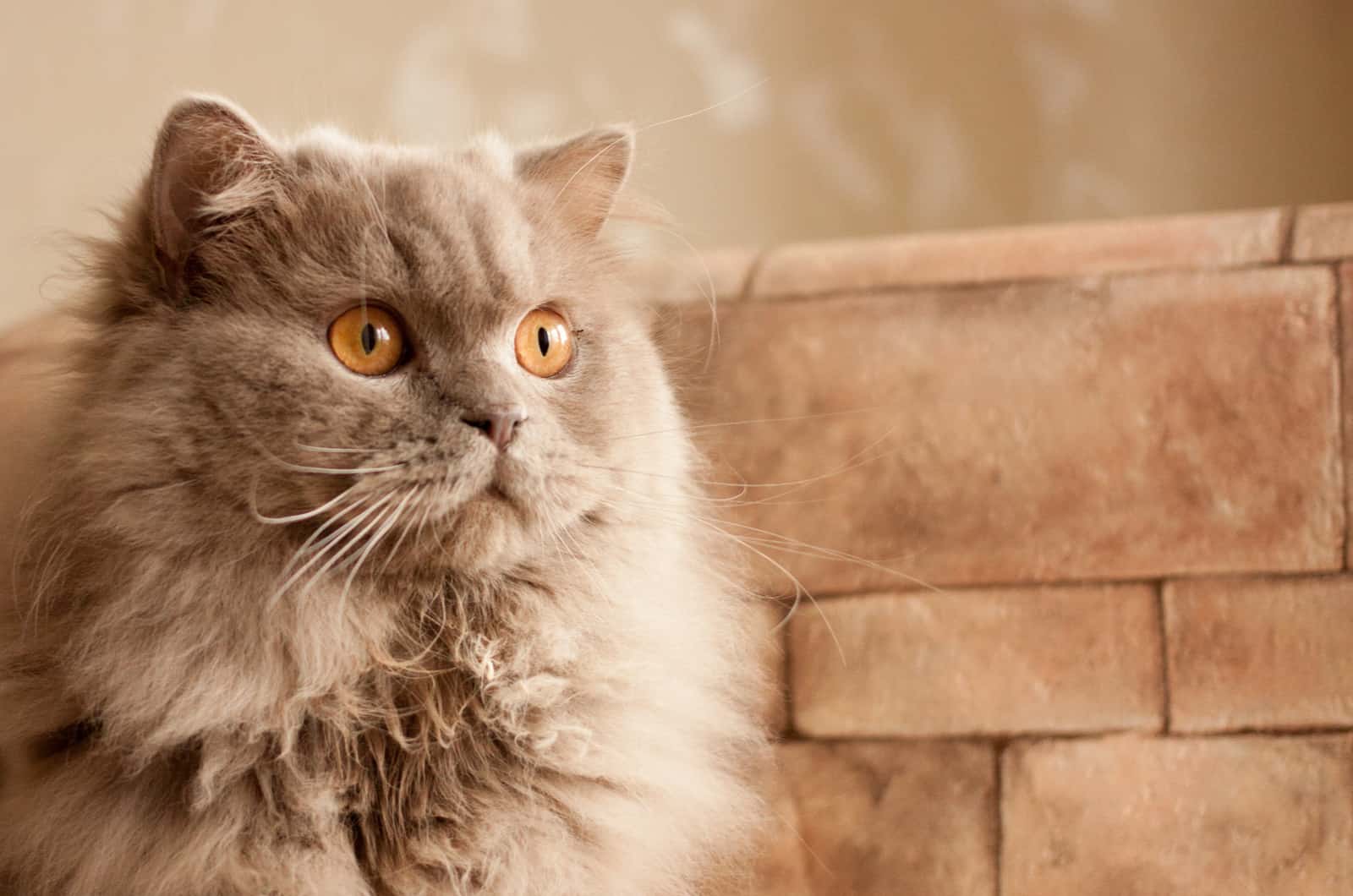
What Is A Tortoiseshell?
Tortoiseshell is a material famous for its color pattern – black and yellow or black and red intertwining patches. Because of this, cats that have the same tortoiseshell color pattern are named tortoiseshell cats.
This material is made from shells of bigger tortoise and turtle species. And yes, as odd as it may sound, tortoises and turtles have shells.
Of course, the use of natural tortoiseshell material has been banned for a long time now, but there are synthetic materials that successfully mimic the natural tortoiseshell material.
Are Lilac Cats Rare?
Yes! Lilac cats are EXTREMELY rare. For a cat to be lilac, it has to win a “genetic lottery” so to speak. In order for a cat to be lilac, it has to inherit two recessive alleles (one from each parent) of a chocolate gene, as well as two recessive alleles for a dilute gene.
Statistically speaking, the chances for this occurring are very low. So if you ever see a lilac cat, you are fortunate as they are a very rare site to see.
How Rare Is A Lilac Tabby Cat?
In the previous answer, I pointed out how lilac cats in general are rare. But when you start looking into specific patterns involving this color – it makes them even more rare.
Essentially, all lilac cats are rare, which makes lilac colorpoint cats or lilac tabby cats even more rare.
Final Thoughts
A Lilac tortoiseshell cat is not something you see very often. They are very beautiful due to their dilute color, interesting pattern, and their undercoats having a slight pinkish undertone.
Those two traits make them very unique and I am sure every cat lover would love having a lilac tortoiseshell cat of any breed.
It’s important to note that lilac tortoiseshell is not a distinct cat breed. It is just a color (lilac) and pattern (tortoiseshell) combination.
These amazing cats are said to have a tortitude, which is said to be characteristic for all torties. In addition, they’re almost all female, which I find to be a fun fact.
Lilac tortoiseshell cats are extremely rare, as is any dilute tortoiseshell. I’ve never even seen one (and I’ve seen a lot of cats over the years, trust me). Have you?
But, at the end of the day, a cat’s coat color or coat pattern do not matter one bit, as all cats are beautiful and unique in their own way. I’m sure all of us can agree on that!
Related Posts:
Black Smoke Cat – This Is What You NEED To Know


